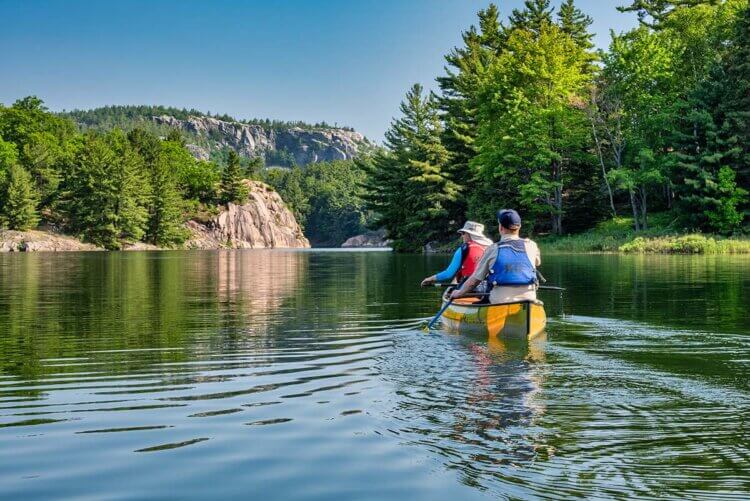
All photos © Robin and Arlene Karpan
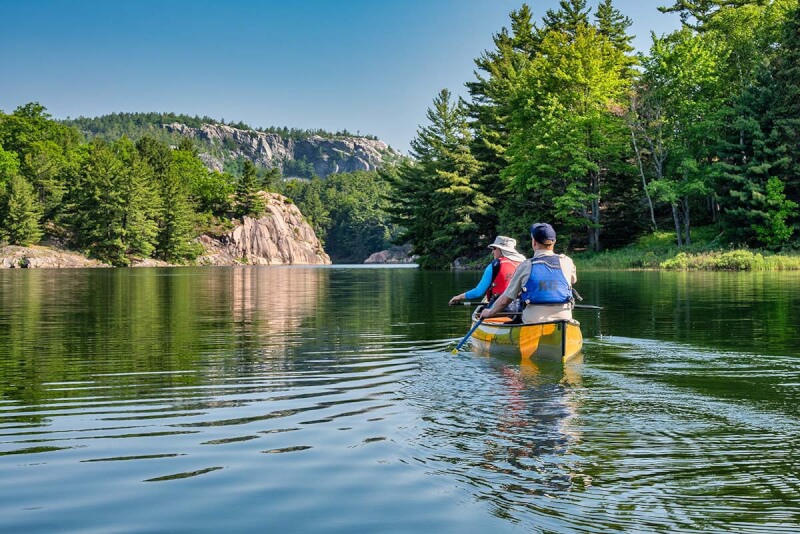
It was like paddling through a Group of Seven painting. We drift by rocky outcroppings where weathered jack pines seemed magically transported from a Tom Thomson canvas. Rounding a bend we gaze over a sublime bay where layered cliffs evoke A.Y. Jackson’s classic works. It seems fitting that this enchanting park owes its existence in large part to the influence of artists.
Killarney Provincial Park ranks among the most popular wilderness areas in Ontario. Even after our short visit, it was easy to see why. Situated on the north shore of Georgian Bay on Lake Huron, the park is known for its pristine backcountry wilderness. White quartzite mountain ridges, pine and hardwood forests, and over 50 crystal clear lakes wait to be explored on backcountry paddling and hiking adventures.
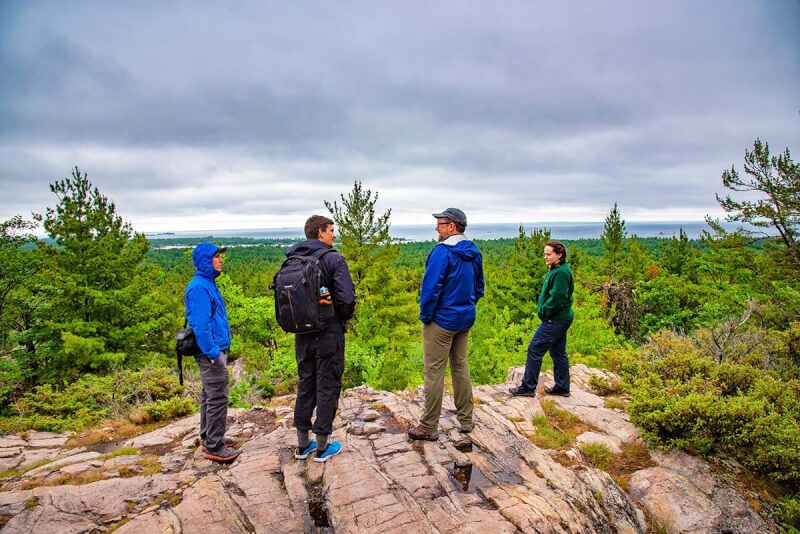
It was influential artists such as A.Y. Jackson and others from the famed Group of Seven who spearheaded protection for the area. The park even has the original hand-written letter that Jackson sent. They lobbied the provincial government to prevent logging around Trout Lake, now known as OSA Lake, named for the Ontario Society of Artists. Trout Lake was granted protection in 1933, and in 1964, Killarney Provincial Park was created. It now encompasses around 645 square kilometers.
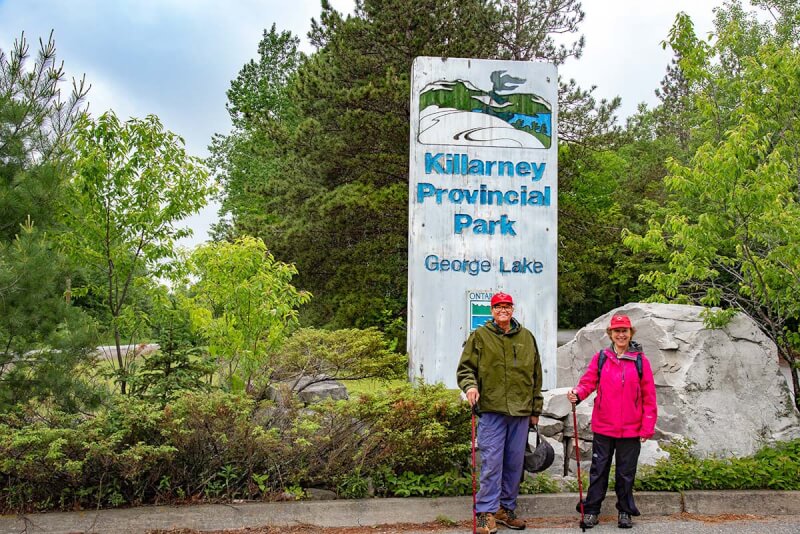
A World Away but Easy to Get To
Killarney stands out from other provincial parks because it has a wilderness designation yet is easily accessible. It’s just over an hour’s drive from Sudbury and only a few hours from the huge population centres of southern Ontario. Highway 637 runs along the southern edge of the park, but there are no internal roads other than the access to George Lake Campground.

In keeping with the park’s wilderness designation, facilities at George Lake Campground are purposely kept at a minimum. The Visitor Centre at the entrance provides an orientation to the park. A central service centre with showers has the necessities, though there are no electric sites, food concessions, or wifi.
For those wanting a bit more comfort, the campground has a small number of yurts and cabins (such as where we stayed). It’s not the kind of campground where people stay for extended visits. Rather, they use it as a jumping-off point for excursions into the backcountry.
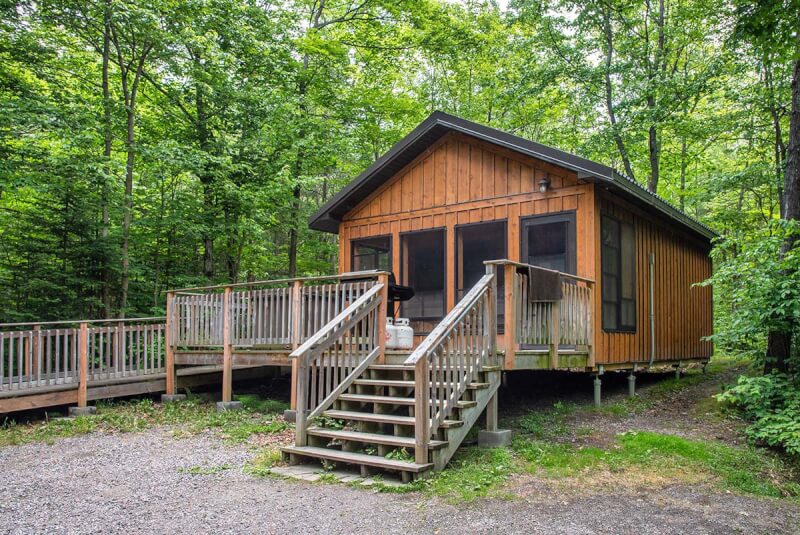
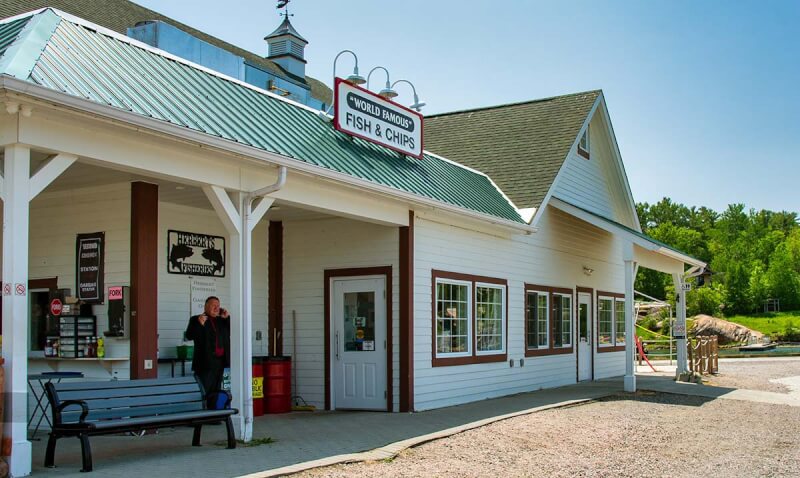
If you need supplies and other services, it’s a short drive to the town of Killarney with shops, hotels and lodges, and restaurants. A popular spot to eat is Herbert Fisheries near the Georgian Bay waterfront where they serve locally caught fish and fresh chips, as they have done for more than 30 years.
Hiking and Paddling
Thousands of people visit the park each year to explore the backcountry wilderness. The park’s unique geological history is primarily responsible for the outstanding lake and mountain scenery, according to Dave Sproule, Marketing Specialist for Ontario Parks. Two to three billion years ago, mountains in the La Cloche range built up with layers of sandstone, siltstone, and other components. The mountains towered in this area and could have been as high as the present-day Rockies. However, steady erosion and glacial action over millennia transformed the mountains into rounded, white quartzite ridges interspersed with grey granite and bright pink mineral deposits.
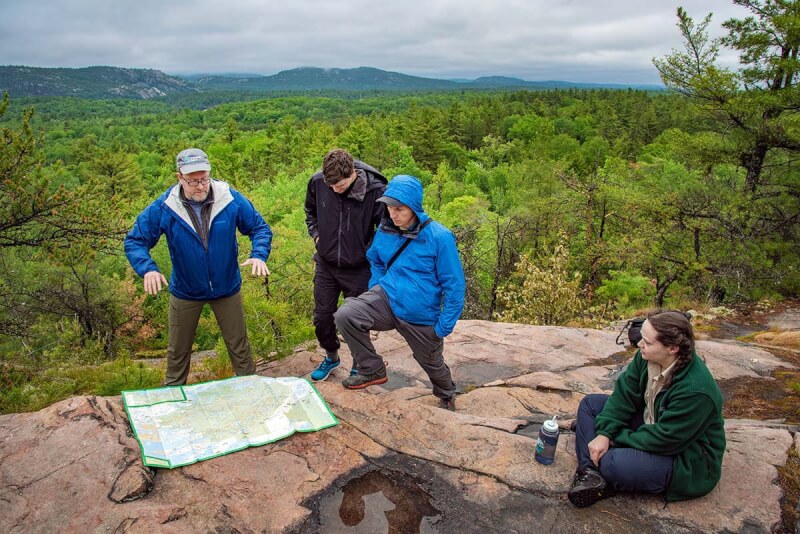
The park’s longest and most strenuous hike is the 7-10 day La Cloche Silhouette Trail with impressive mountain and lake views along the 75-km route. The 8-hour Crack hike (rated Difficult) attracts many hikers to its challenging terrain, with steep inclines into the “crack” crevice lining the trail. Rock faces on all trails can be very slippery during wet weather, calling for extra caution.
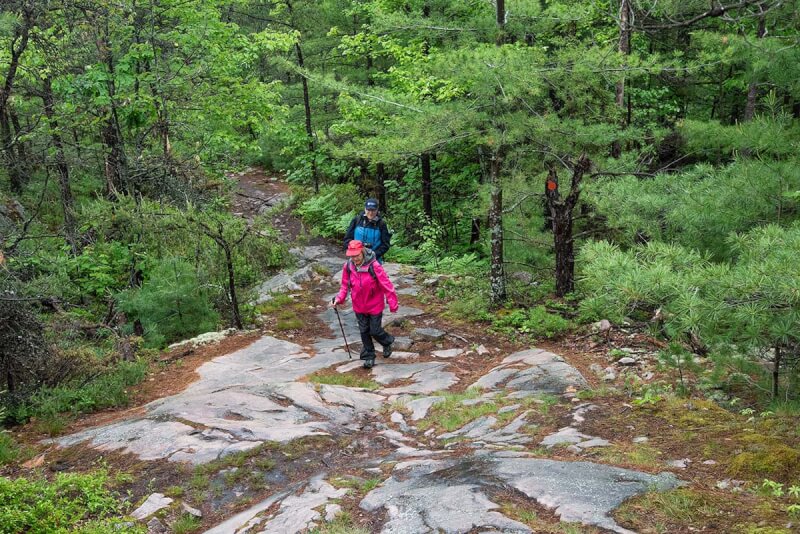
We explored a couple of the shorter hikes accessible from the campground: Cranberry Bog at 4 km, and Granite Ridge which is only 2 km but climbs up through forest along rocky terrain. Both provided a great introduction to Killarney highlights with marshes and lowlands, wildflowers, and sweeping views over the La Cloche range on one side of a ridge and over Georgian Bay on the other side.
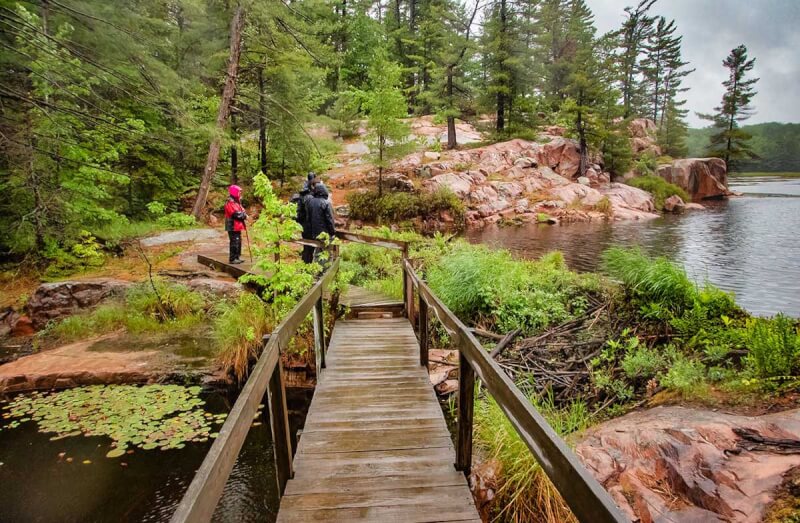
For paddlers, Killarney offers several multi-day wilderness paddling options with well-marked portages and backcountry campsites on sapphire-coloured lakes and interconnecting rivers. You can only camp at designated campsites which can be reserved up to 5 months ahead. A popular option for those staying at George Lake Campground is to canoe or paddle-board on George Lake to see the forested cliff-lined bays and the famous Turtle Rock formation. Outfitters such as Killarney Outfitters can provide canoes and gear, and help with trip planning into the interior.
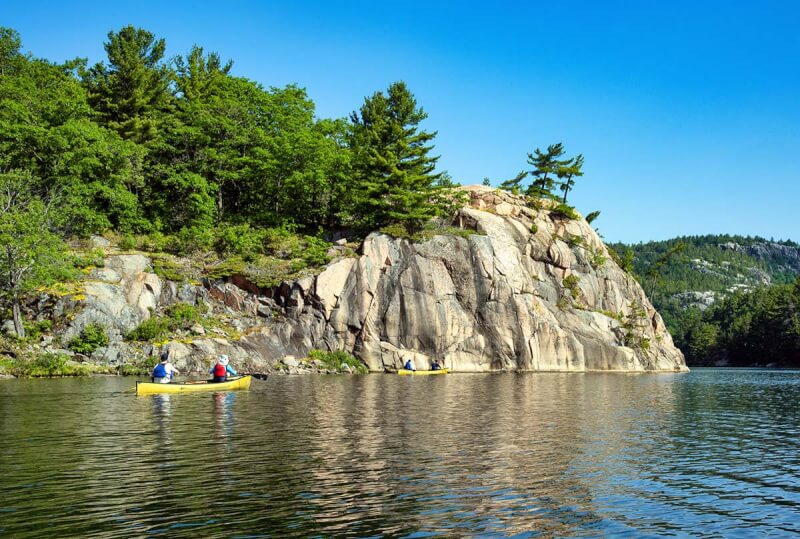
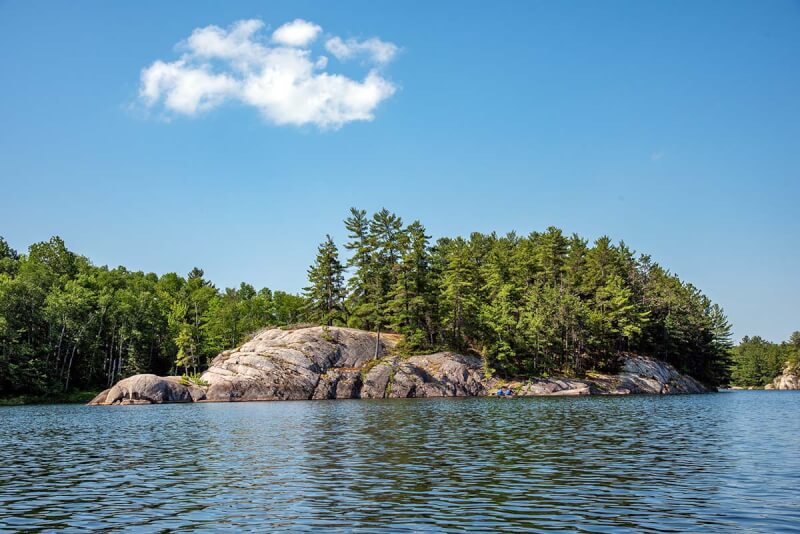
On the Road to Recovery
Killarney has had its challenges over the years. During the last century, concentrated emissions of sulphur dioxide released in nickel mining operations in nearby Sudbury had a profound effect on Killarney’s ecosystem.
As far back as the 1960s, researchers were astounded that they could not find any fish in the lakes. They determined that acid rain held within the water basin caused the lakes to die. The effects were widespread and impacted many species. That’s why the lakes are so incredibly clear and appear bright blue, like “windex” colours as one park official commented.
Fortunately, a lot has changed. Emissions and pollution in Sudbury have decreased dramatically and the region is on the road to recovery. Ever so slowly, water quality in the park’s lakes is improving, and researchers are considering reintroducing some native species such as trout.
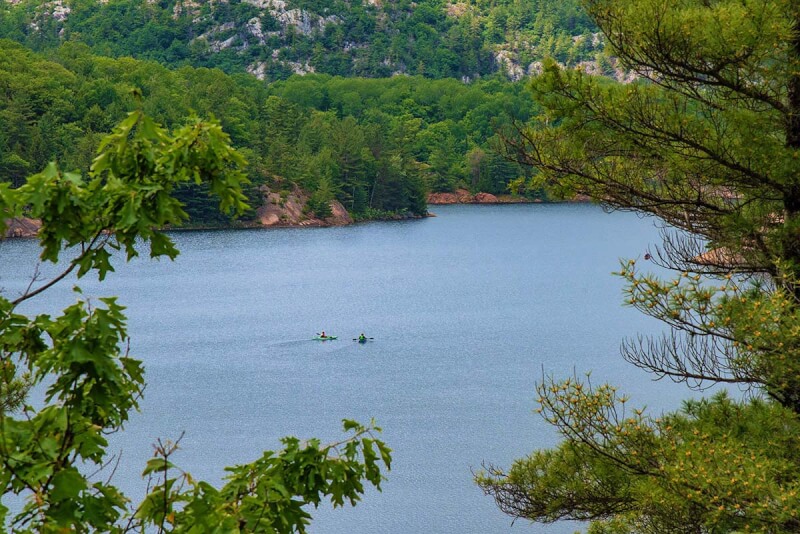
Park Programs Teach Visitors to “Care Deeply”
Over the past few years the number of visitors coming to the park soared sharply to around 220,000. A major factor was the pandemic when people from southern Ontario were looking for a safe place to be alone yet get in touch with nature.
Park staff are pleased with the high visitation since they can tell more visitors about the special features of Killarney and how to protect the park. “We’re excited to have so many people wanting to connect with nature,” explained the park’s Chief Biologist Kathleen Houlahan-Chayer, “but we have to do it in a sustainable way so that we’re not loving Killarney to death.”

Some of their programs include how to camp in the backcountry and leave no trace, develop wilderness skills such as reading maps, and sessions on geology, butterflies, astronomy, and even loon counts.
The Sky’s the Limit
Astronomy draws many to the park. In 2018, Killarney was designated an official Dark-Sky Preserve, recognized by the Royal Astronomical Society of Canada, a first for an Ontario provincial park. The park’s popular programs might involve learning about planets, the moon, comets, geology, and drop-in nights with guest astronomers.
Kate, a park naturalist who led our discussion one evening, stressed the significance of this location. “Our view of the night sky is relatively unspoiled,” she explained. “At Killarney, we can see thousands of stars on a clear night, and that’s because we have very little light pollution.” Two powerful telescopes are used both in programs and specialized research. Kate first honed in on Venus, then on another distant star cluster, and we were able to observe the formation with amazing clarity.
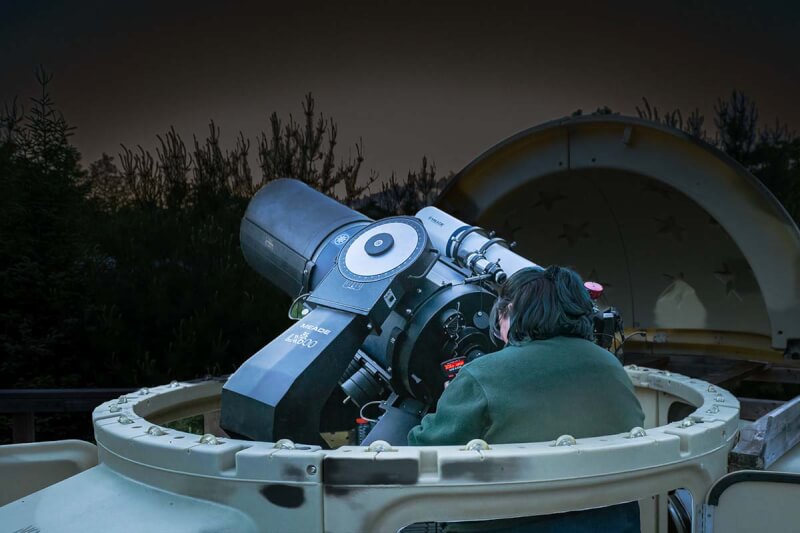
Art in the Park
In keeping with the theme of the park’s strong association with artists, we took part in a program where we had a chance to reflect on the natural beauty and create our own watercolor impressions. Using a palette of natural paints made by a local First Nation artist, we found just the right spot to create our masterpieces. It was a great exercise to slow down and focus on details in the landscape. However, it soon became apparent that the Group of Seven won’t have to worry about being upstaged.
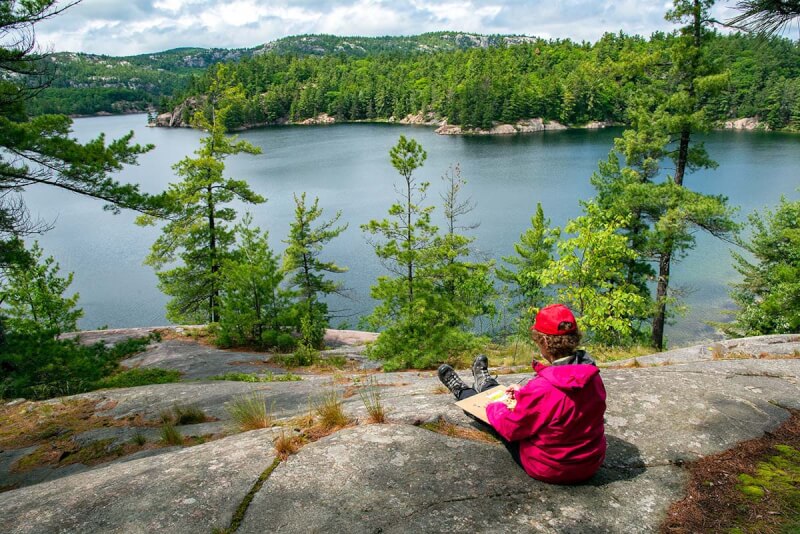
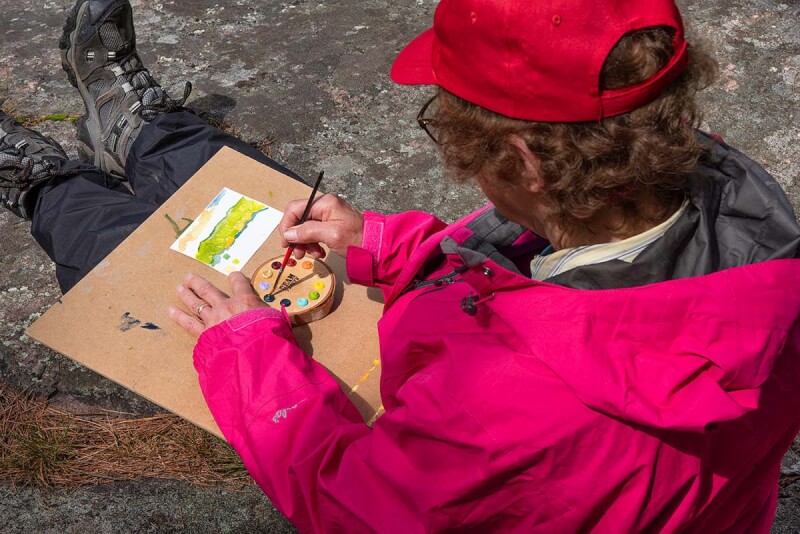
Resources
Killarney Provincial Park for more details on the park.
Ontario Provincial Parks for further information on all parks in the province.
Sudbury Tourism for more fascinating things to do in the Sudbury area such as outdoor adventures, art and culture, and events.
Other articles on Photojourneys that you might enjoy featuring Ontario provincial parks:
Photography in Neys Provincial Park along Lake Superior.
Rainbow Falls Provincial Park
Exploring Lake Superior Provincial Park
Highlights of Thunder Bay including Kakabeka Falls Provincial Park, and Sleeping Giant Provincial Park
SUBSCRIBE to Photojourneys below
Feel free to PIN this article on Killarney Provincial Park in Ontario



In the bottom photograph the artist is using a tiny circular palette. I have never seen one like it.
Where could i purchase one?
I certanily enjoy the photo journeys written articles.
Merle – Thanks for your inquiry. The company that makes the paints is Beam Paints. Here is the direct link to the page with the type of palettes that we were using. https://www.beampaints.com/collections/reclaimed-cedar-palettes